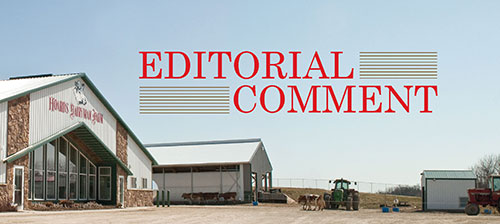
The work by the Innovation Center for U.S. Dairy has placed the dairy sector in the forefront of the sustainability movement. While dairy was an early leader out of the gate, continued efforts will be a must because the sustainability conversation is gaining traction throughout the world.
For U.S. dairy, many of us already know the energy required to produce a unit of milk fell by 37 percent from 1944 to 2007. Much of those savings hinge on the modern dairy cow that produces well over 400 percent more milk than its World War II-era cousin. Not only is this important to reducing energy use, the improved productivity will help feed the additional 2 billion souls on our planet by 2050.
The question remains whether we need to produce more food or take better care of the food we already produce? We believe the combination of more food and better caretaking of that food will help us meet future nutritional needs.
Just how bad is food waste?
“Food waste would rank as the third largest carbon emitter behind China and the United States,” said John Mandyck, chief sustainability officer at United Technologies Corporation. In just one sentence, Mandyck said a mouthful to those attending the The Economist magazine’s “The Company of the Future Innovation Forum.” He also pointed out that not all food waste is the same.
One-third of food waste happens when consumers and restaurants buy too much food and toss it. That’s the situation in developed countries like the U.S. and most found throughout Europe. Meanwhile, two-thirds of food spoils from farm to market in developing nations due to lack of refrigeration and continued sales at open-air markets. “Unfortunately, the entire world wastes 33 to 40 percent of the food grown on this planet,” Mandyck went on to say.
Are Mandyck’s assertions valid?
We tend to believe him.
The company he works for, United Technologies Corporation, can power elevators in some of the world’s largest high-rise buildings by merely running on the equivalent of a hair dryer motor. That represents an energy savings of 80-plus percent. Similar results are being developed for refrigeration systems and commercial aircraft. The latter is expected to double from 20,000 to 40,000 airliners by 2050.
These sustainability-related innovations remind us all that we must double down on our collective resolve to reduce energy use. To meet that challenge, it will take collaboration with the most unlikely partners. That could include firms like Mandyck’s.










